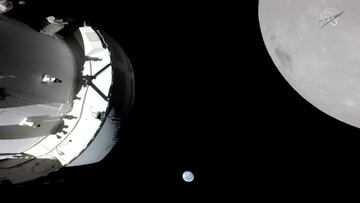What is the return date to earth of the Artemis 1 mission?
NASA’s Artemis 1 moon mission has entered the final stage of its 25-day journey, the Orion spacecraft is now heading home.

Just a few hours ago, Orion left its distant retrograde orbit and began its return journey home to Earth. The Artemis I spacecraft was launched from Kennedy Space Center in Florida on Wednesday 16 November 2022, to begin a 25-day lunar mission. The main objective of the mission is to test the Orion spacecraft with a view to conducting further moon missions “to reestablish a human presence on the Moon and demonstrate technologies and business approaches needed for future scientific studies” according to NASA.
LIVE NOW: The @NASA_Orion spacecraft is performing the first of two maneuvers to exit lunar orbit and begin its journey from the Moon back to Earth.
— NASA (@NASA) December 1, 2022
The burn is scheduled to begin at 4:53pm ET (21:53 UTC). #Artemis https://t.co/ymYGTm6IUK
Future moon missions
One of the key aims of Artemis 1 was to see how the Lockheed Martin-designed protective heat shield performed on the uncrewed Orion module during atmospheric re-entry to Earth when it must withstand temperatures of 2,760 °C (5,000 °F) while travelling at 24,500 mph (Mach 32). One of the reasons why NASA are keen to test the heat shield is that Orion’s return won’t be like a typical re-entry - the module will be travelling 7,700 mph faster, and will register temperatures 73% hotter (5,000 °F versus 3,000 °F) than a spacecraft returning from low Earth orbit (LEO).
“Re-entry is where the heat shield and TPS on the crew module really have to do their job,” Joe Bomba, Lockheed Martin senior staff aeronautical engineer explained. “Spaceflight missions are really all about energy management - we design the systems required to make those energy transfer processes that are necessary to meet mission objectives possible and efficient, but we also design the vehicle in such a way that, from structures, to subsystem design, to the concept of operations, we minimize or mitigate the environments that are induced from those energy transfer processes.”
Final orbit
Related stories
On Thursday, the Artemis I mission management team gave the go-ahead for Orion to depart from its distant retrograde orbit - an elliptical orbit around the moon, where it has been since 25 November. Orion completed one final pass of the moon before performing a 1:45 minute burn to depart its orbit - the manoeuvre was streamed live on NASA’s Youtube channel.
So Orion is now heading back toward Earth. The module is expected to splashdown in the Pacific Ocean on Sunday 11 December, having covered over 1.3 miIlion miles during its journey.

